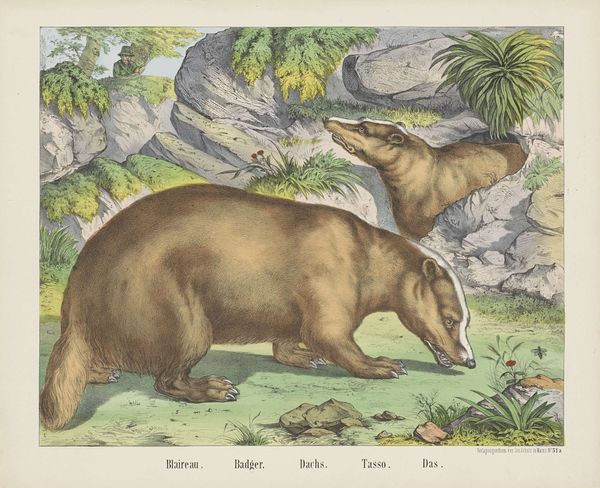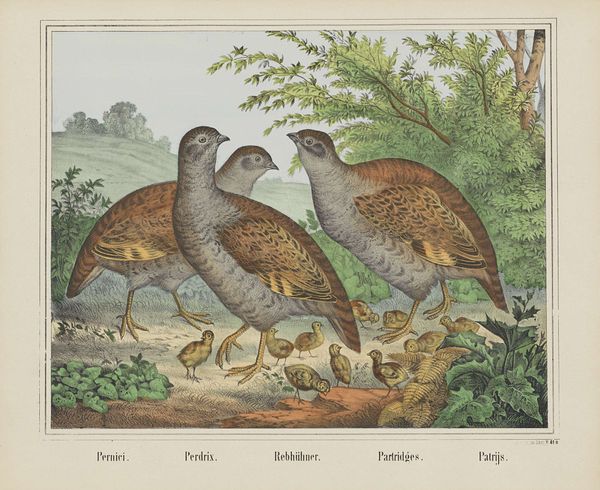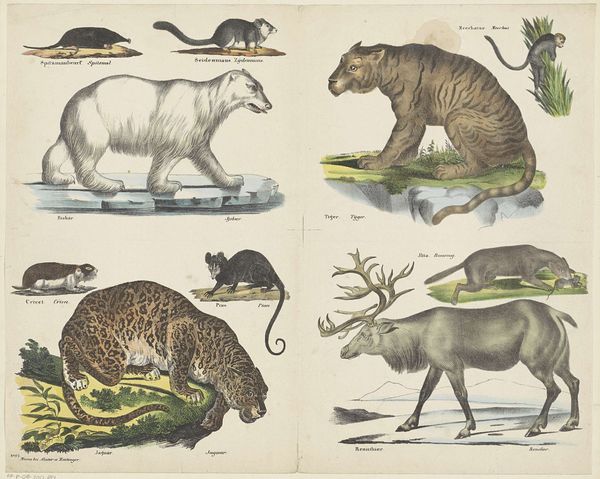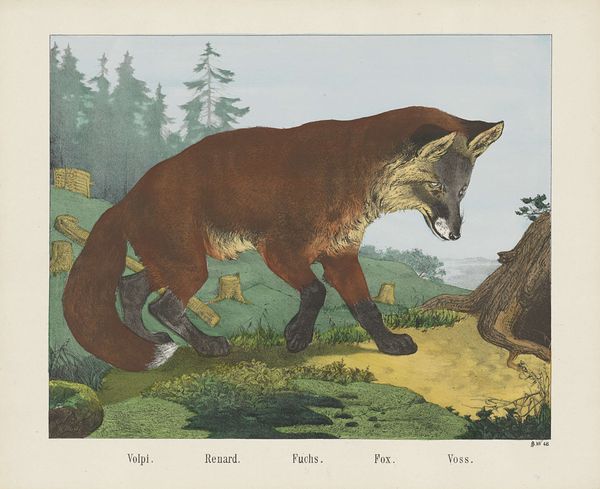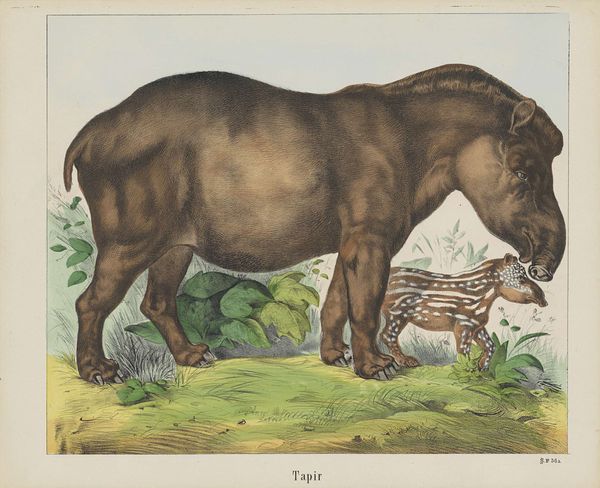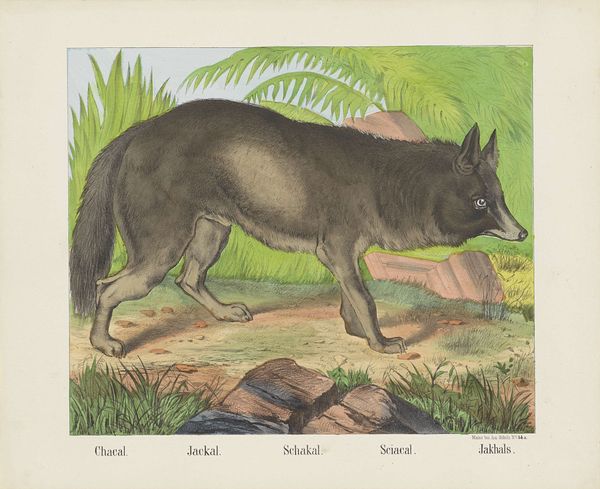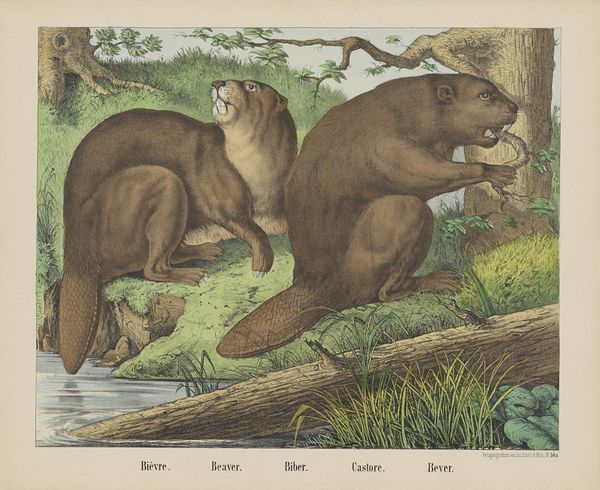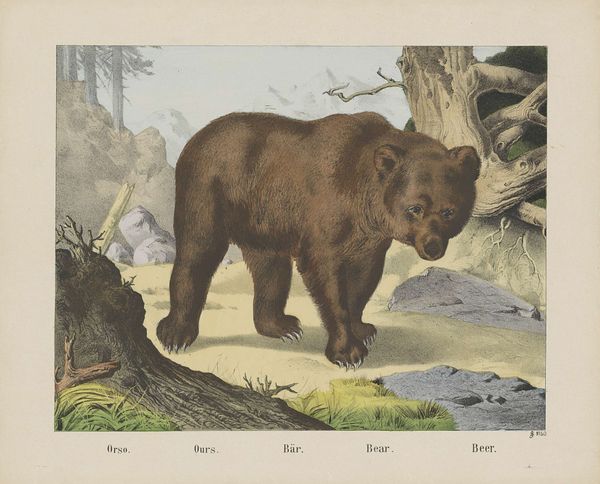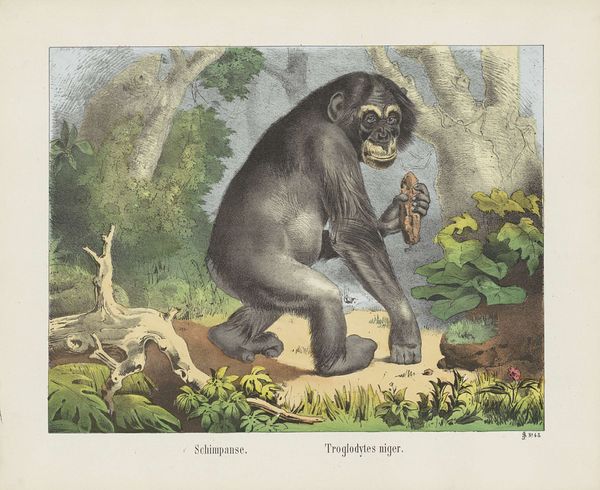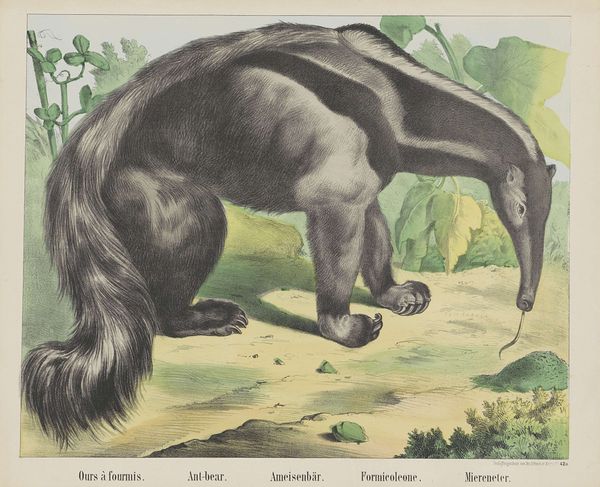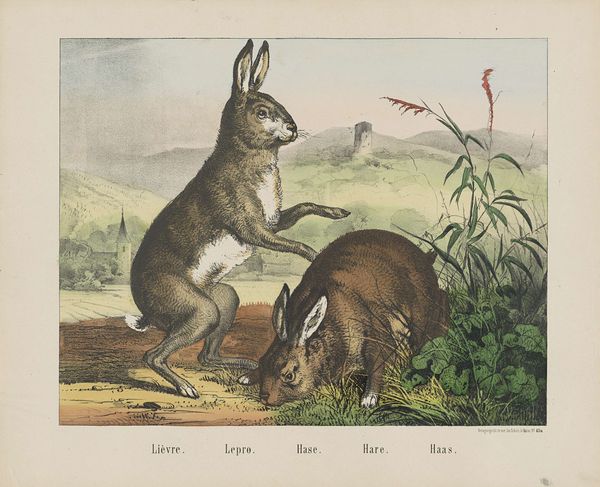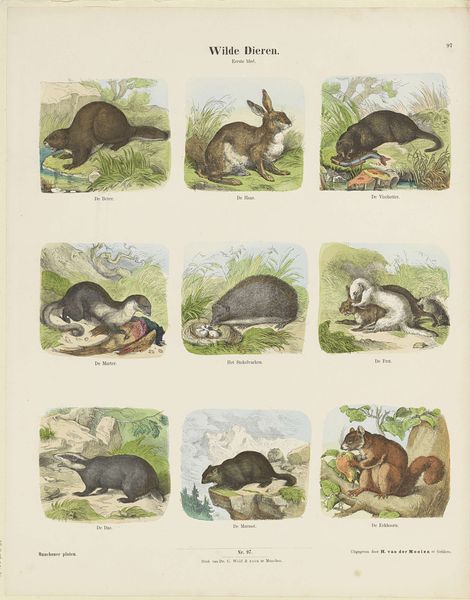
Loutre. / Commonotter. / Fischotter. / Lontra. / Vischotter 1829 - 1880
0:00
0:00
firmajosephscholz
Rijksmuseum
watercolor
#
animal
#
landscape
#
caricature
#
watercolor
#
coloured pencil
#
watercolour illustration
#
realism
Dimensions: height 349 mm, width 429 mm
Copyright: Rijks Museum: Open Domain
Editor: This delightful watercolour and coloured pencil illustration, "Loutre," by firma Joseph Scholz, was created sometime between 1829 and 1880. The otter looks so proud of his catch. What strikes you about it? Curator: I'm immediately drawn to the materiality of the print itself. Think about the labour involved in its creation and distribution. It’s not just about depicting nature; it's about accessing and circulating that image through very specific means of production and consumption during this period. How do the artistic choices in the making of this affect your appreciation? Editor: I hadn't considered the printmaking process itself. I suppose I was mostly engaging with it as a picture of an otter, appreciating the artistry, but your perspective changes that entirely. What does the mass production of such an image signify? Curator: Mass production means wider dissemination, implying a broadening interest in the natural world amongst a particular social class that had access to disposable income for such things. These images reflect the growing intersection of art, science, and commerce, but also consider how these practices often serve existing power structures by visually categorizing nature for consumption. What labour, materials, and industries do you think are involved here? Editor: Well, there's the artist’s labour, the paper and pigments of course. Also, I guess, we’re looking at the machinery for printing, and the distribution networks to make these available on a mass scale, as you say. I’m seeing that what looks like a simple illustration actually involves so much more than meets the eye! Curator: Exactly. And the more we investigate its components and material footprint, the more clearly we understand not only the object itself, but also the social and economic systems that supported its creation and continue to shape our understanding. Editor: I agree. Looking at it through the lens of material culture certainly deepens its significance. Thanks!
Comments
No comments
Be the first to comment and join the conversation on the ultimate creative platform.
